Kleiner’s Korner: The 1909 Vanderbilt Cup Race Statement of Earnings
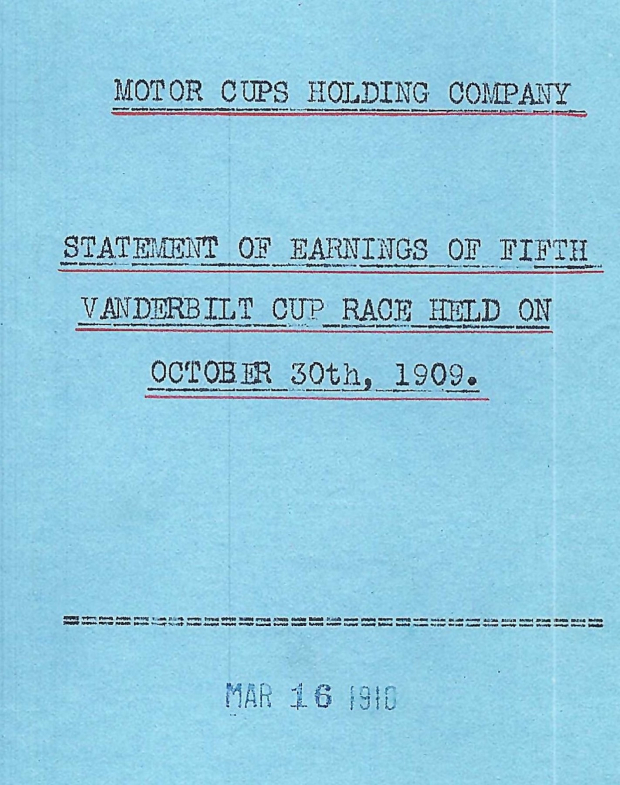
How much money does it take to run a race? Is profit the motive? Did the 1909 Vanderbilt Cup Race race keep to budget?
Quite a lot of thought was obviously needed to plan the 1909 Vanderbilt Cup Race in terms of where the money was to come from and how this money would be spent to make the race a success. But were the organizers interested in profit alone? You be the judge based on these detailed financial records. Documents courtesy of the Suffolk County Vanderbilt Museum in Centerport, NY.
The Statement of Earning
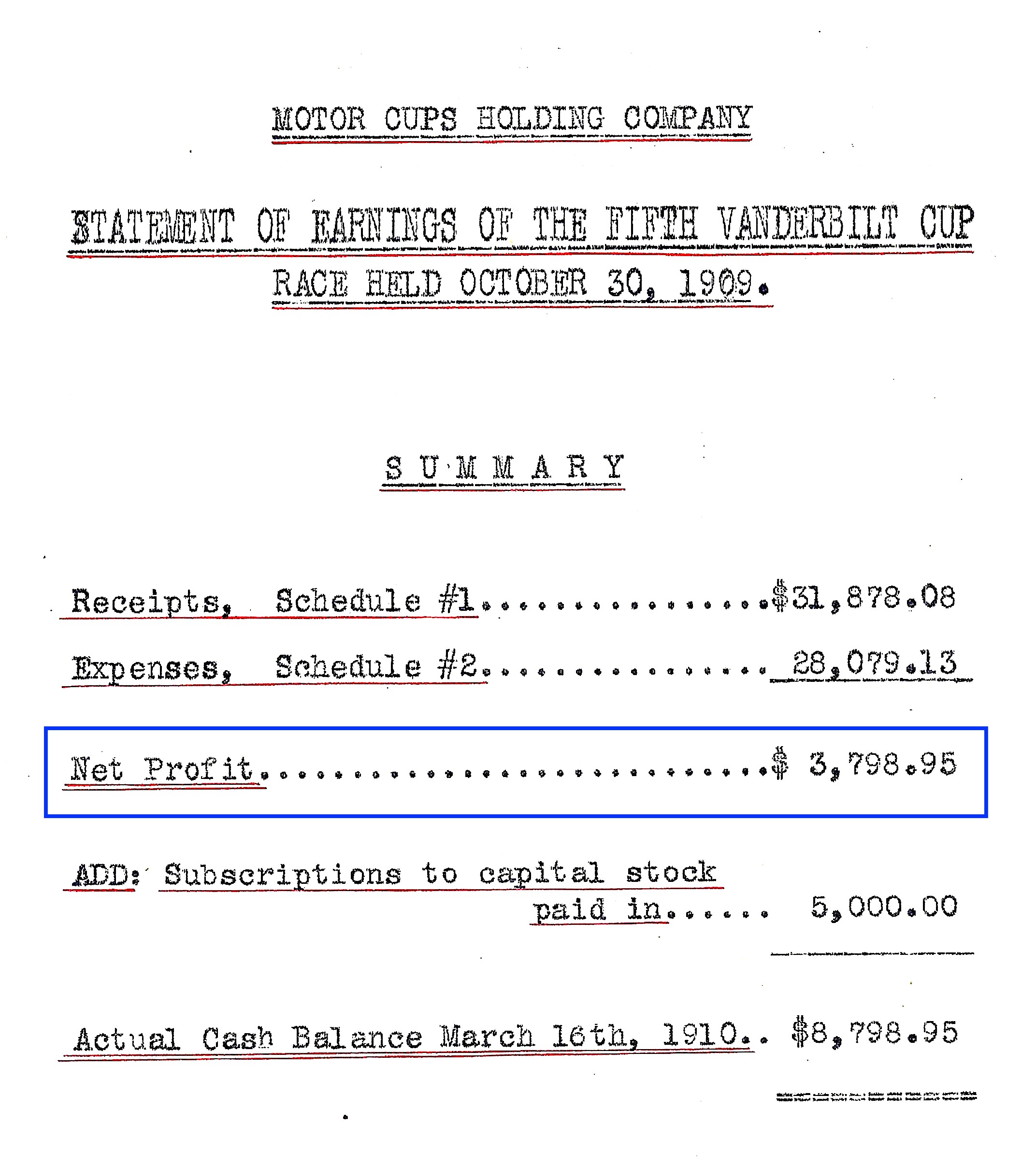
Yes, the race did produce a profit!
Where the Money Came From: Schedule #1
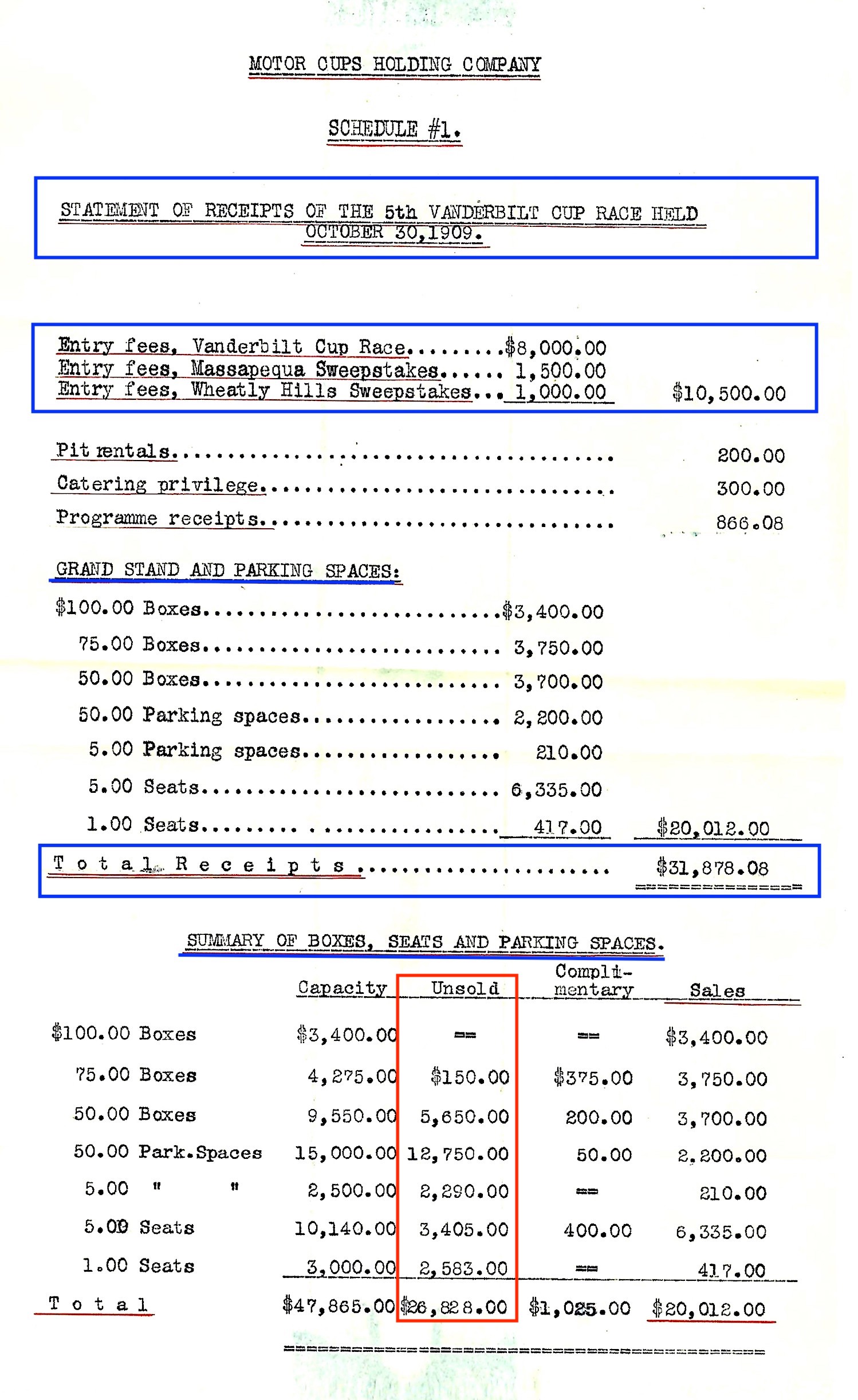
Fees and the sale of boxes, seats and parking spaces contributed to the total receipts of nearly $32,000. Interestingly, as the chart at the bottom indicates many seats and parking spaces were not sold; nearly another $27,000 of revenue would have been taken in!
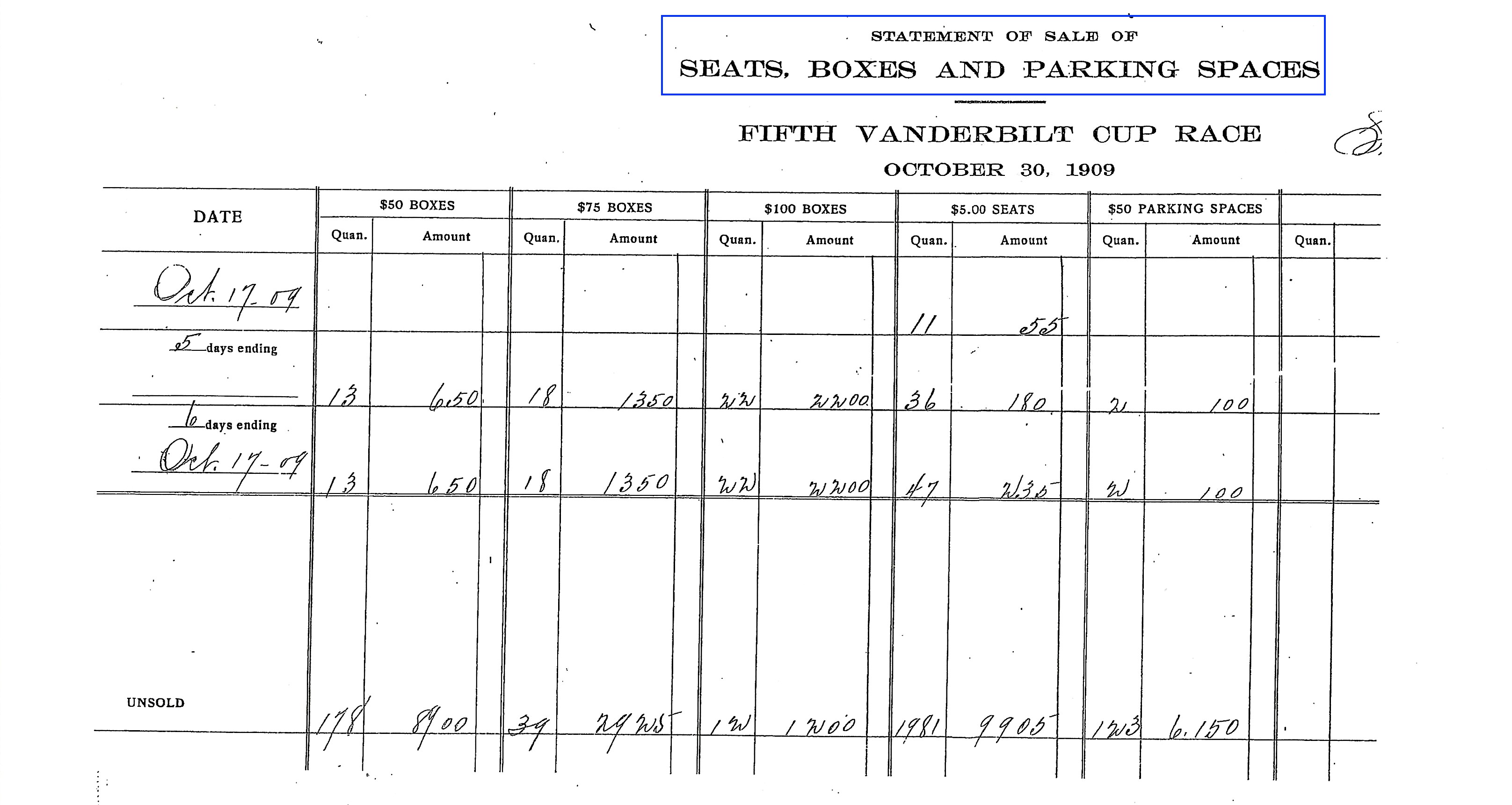
Sales records of each type of seat and parking space were kept as well those unsold.
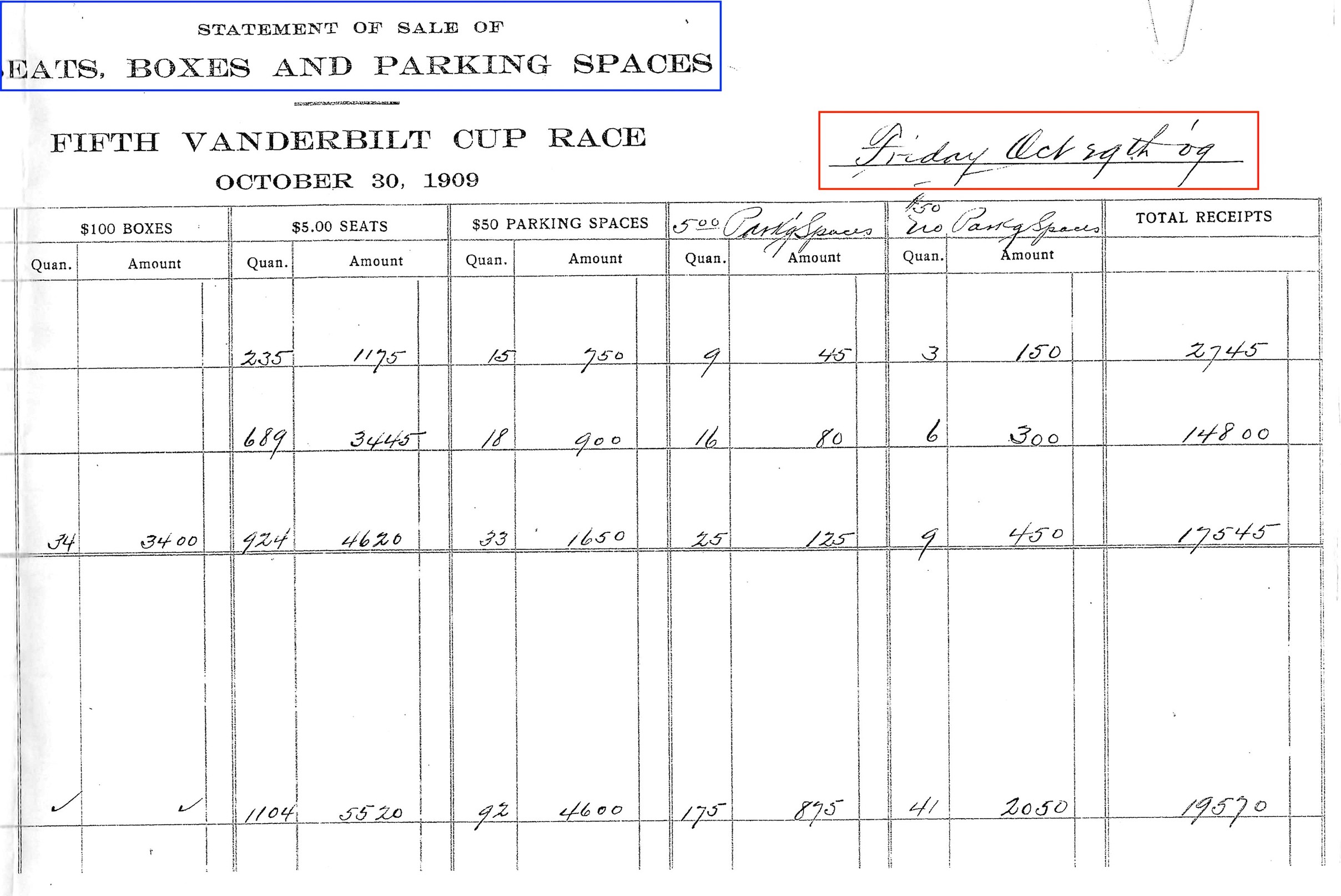
Here's the final listing of sales the day before the race, however the final numbers do not necessarily equal the statement of earnings.
How the Money Was Spent: Schedule #2
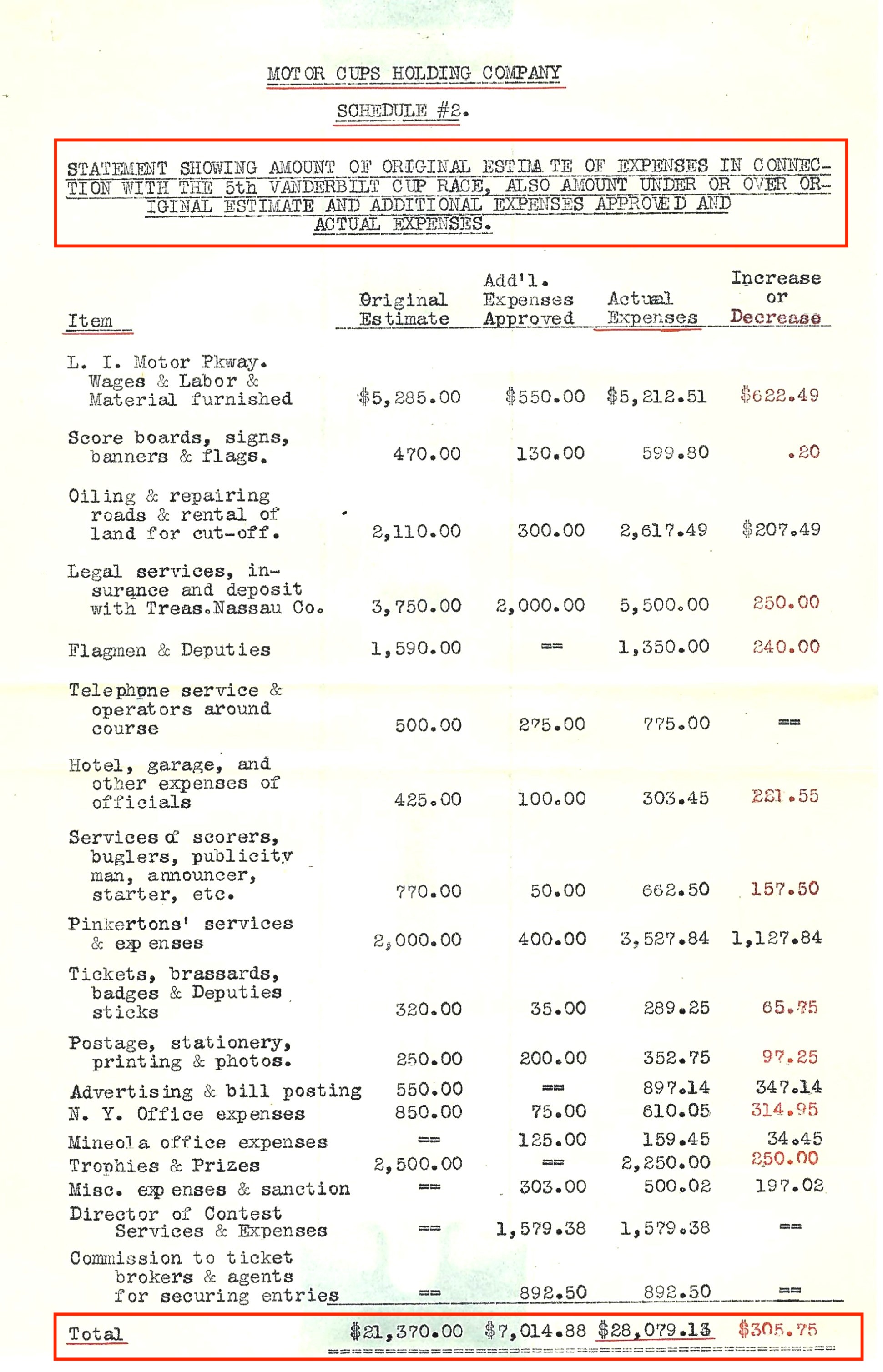
Schedule#2 lists estimated vs. actual dollars spent (plus approved additions) for a variety of expenses; the most costly being related to the Long Island Motor Parkway.
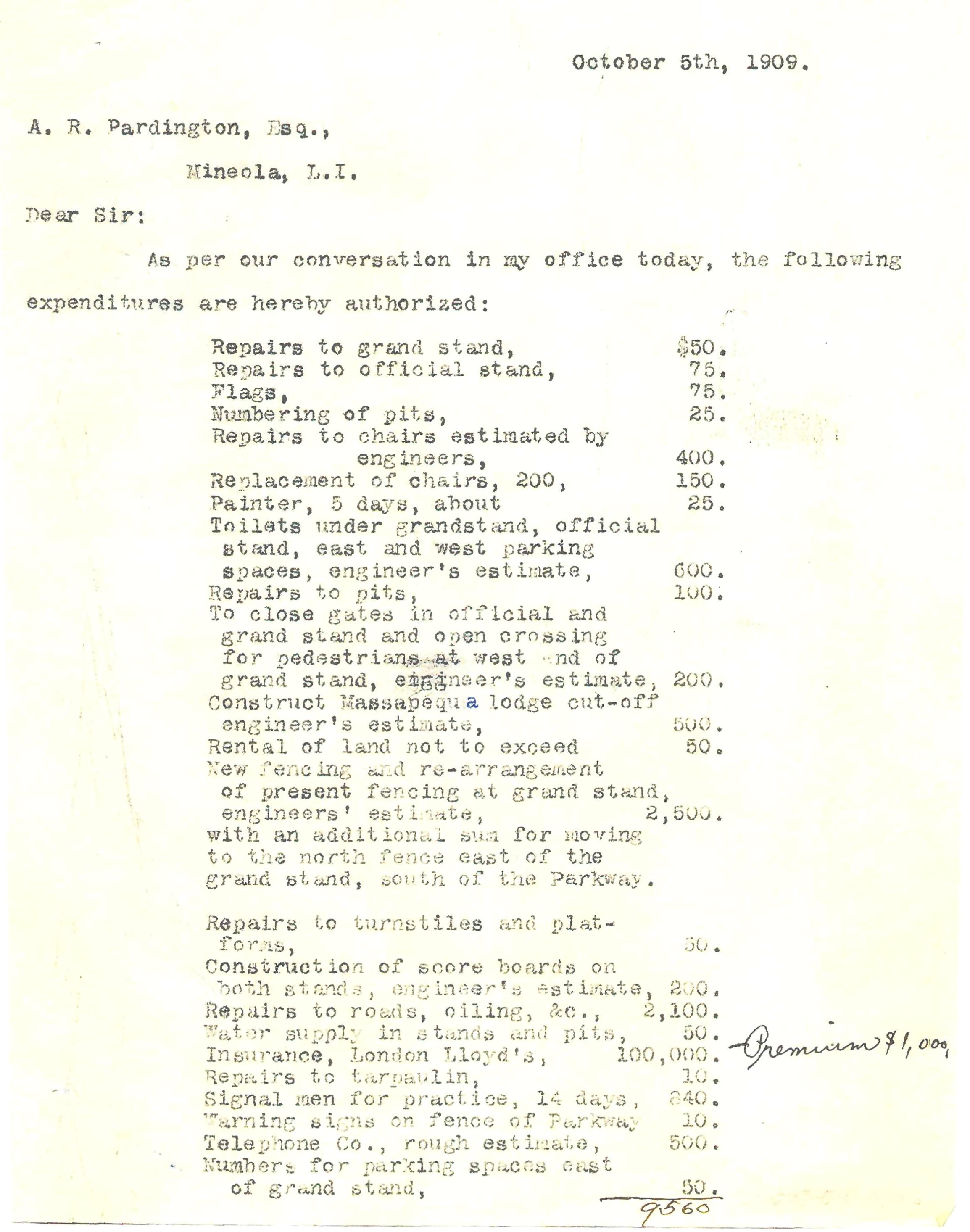
Prior to the race A.R. Pardington discussed estimates for expenditures with Willie K. who gave his approval for the amounts shown on the attached. Some interesting entries: $25 for a painter for 5 days, $600 for toilets (need more research on this one), $200 for the opening and closing of pedestrian gates, $500 for the construction of the Massapequa Lodge cut-off and $500 for telephone expenses.
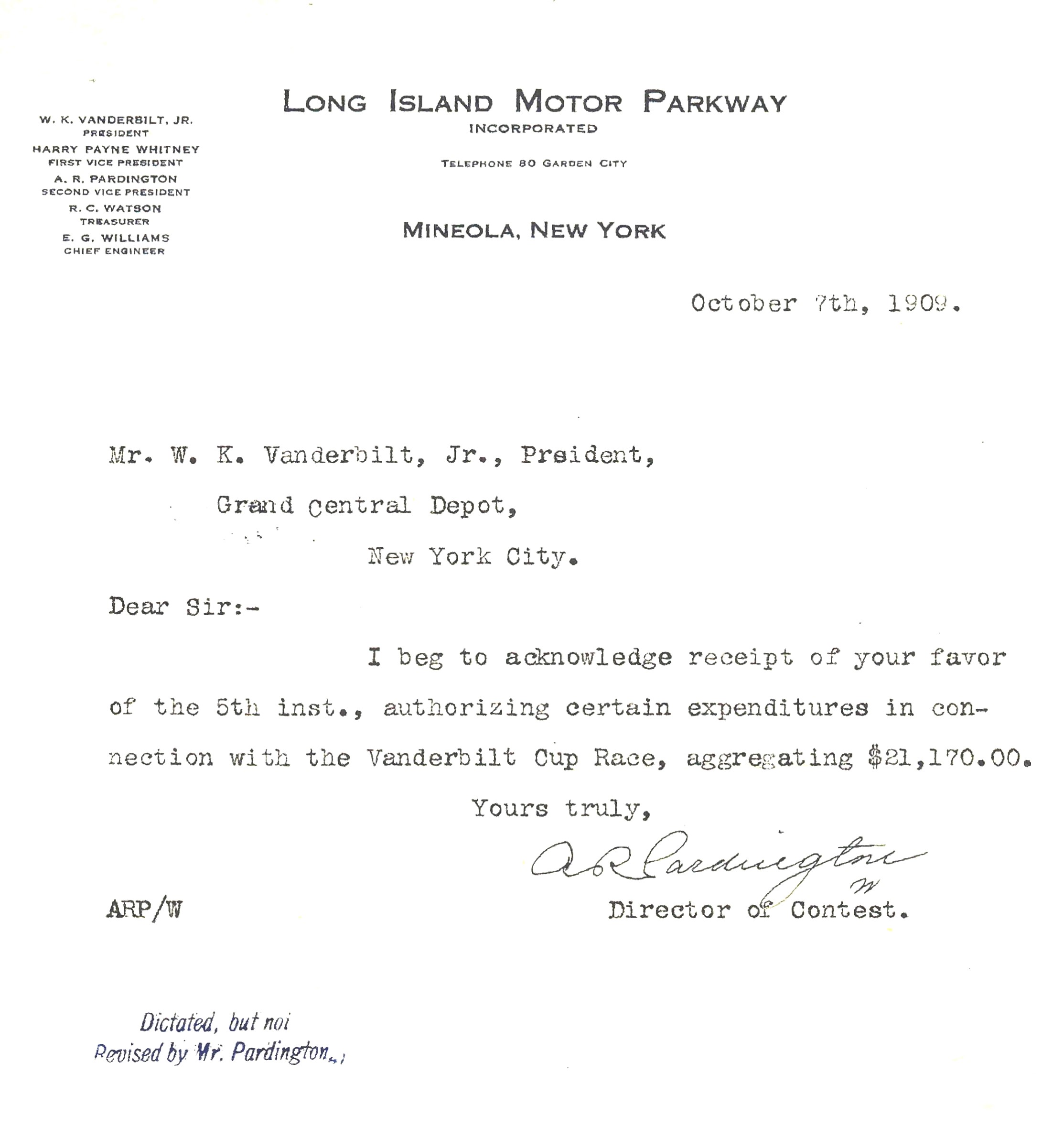
Here is Pardington's formal acknowledgement of Willie's approval.
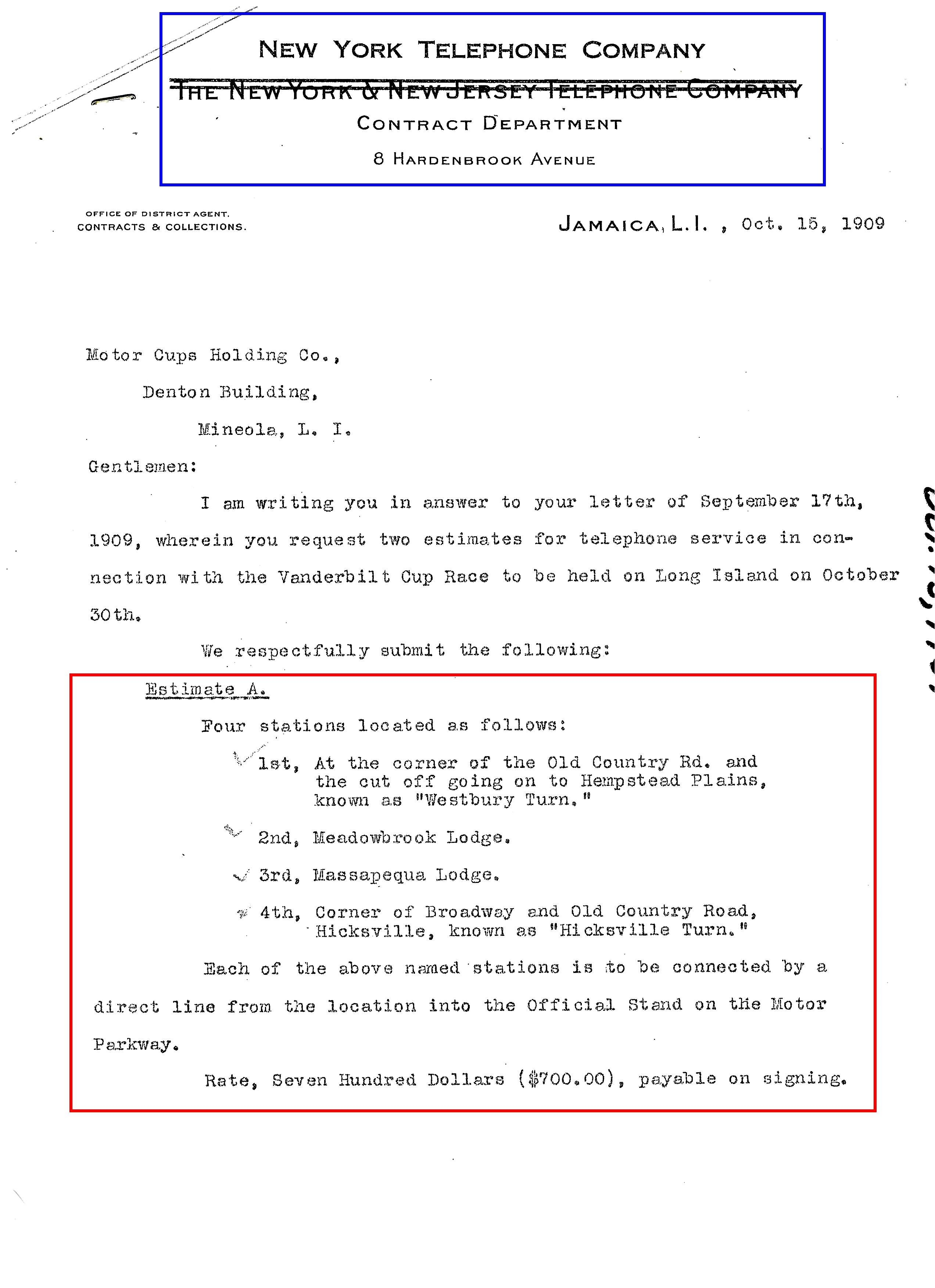
The New York Telephone Company provided two estimates for four stations ($700) or six ($900) and noted the location of each. Each station would be connected by direct line to the official's stand on the Motor Parkway. Based on the expenses shown on schedule #2 the four station estimate appears to have been selected.
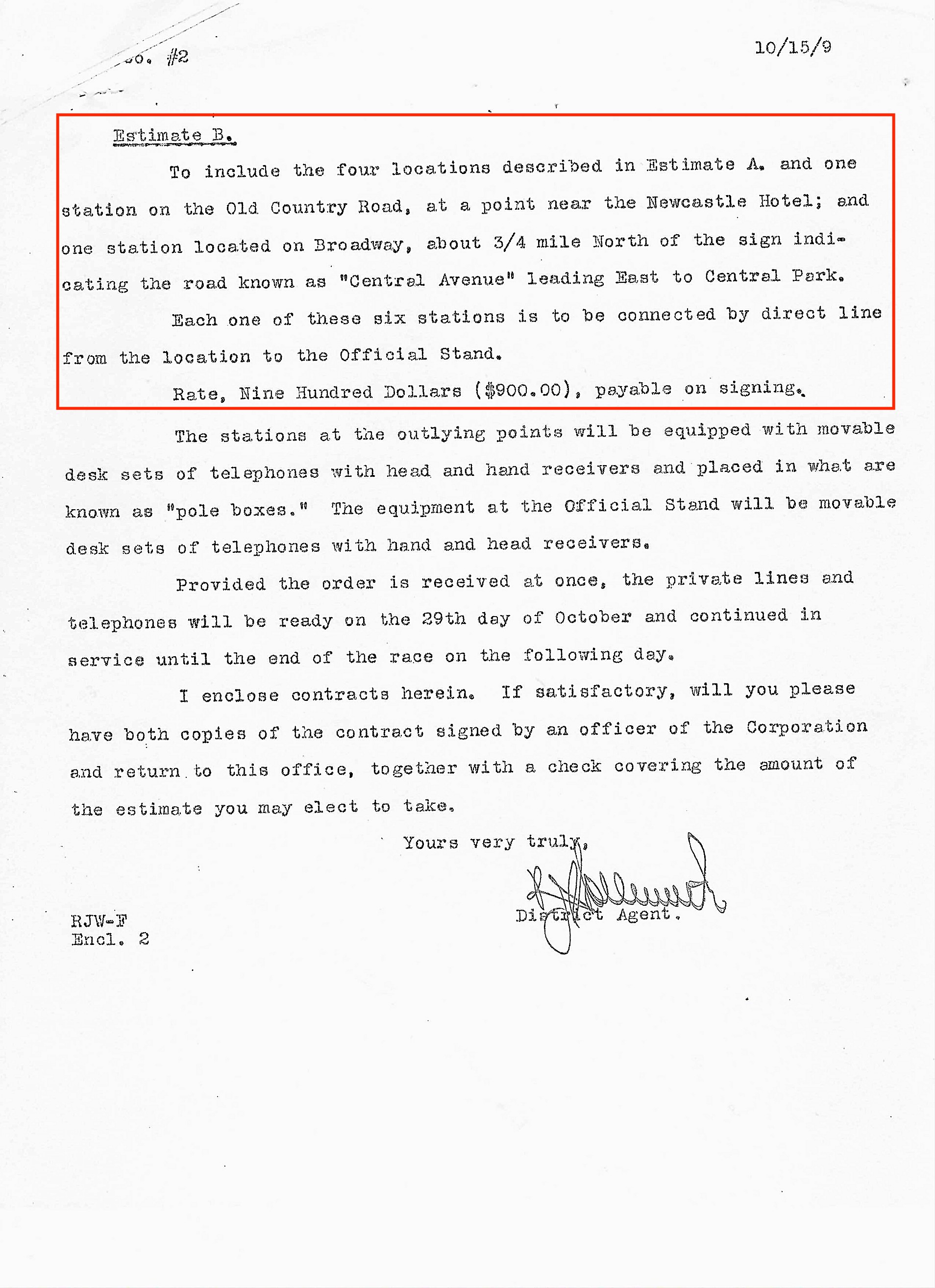
Additional telephone equipment included "moveable desk sets of head and hand receivers" placed on "pole boxes" at each station and the official stand where no pole box was needed. The company committed to having the equipment ready on Oct. 29 (the day before the race) and in service until the end of the race the following day.
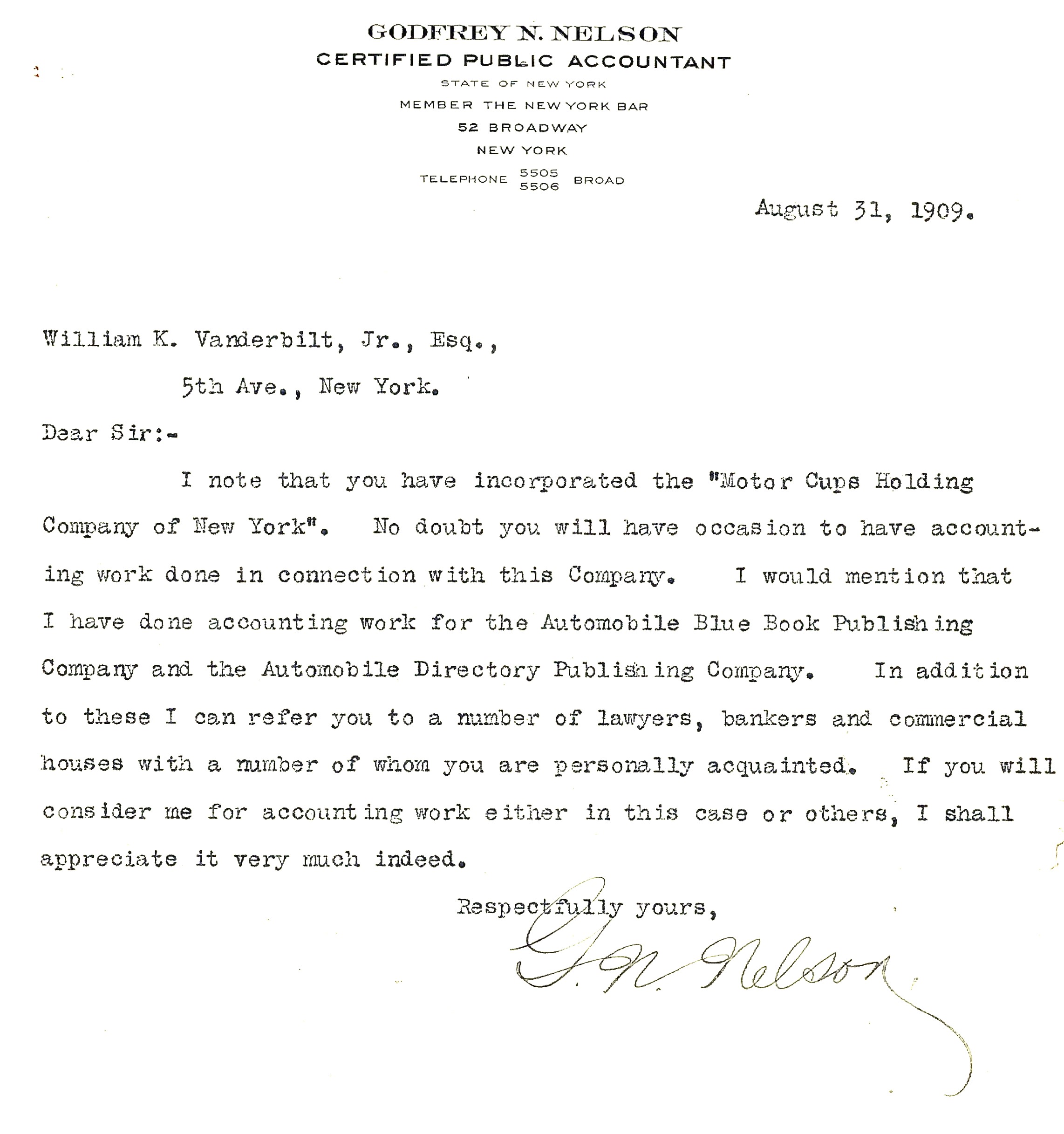
Two months before the race an opportunistic CPA appeared to have solicited Willie K. for accounting work to be done. Not sure he was selected.

Comments